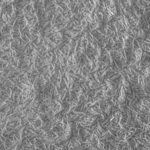Are you wondering how to join Plexiglass to glass? You’ve come to the right spot! Glueing Plexiglass to glass is an easy process that requires the right materials and tools.
In this blog post, we’ll share all the steps you need to know for a secure attachment.
We’ll also discuss which type of adhesive works best and how long it takes for the glue to set. With our tips and tricks, you can confidently attach Plexiglass to any piece of glass in no time.

Let’s dive into how to glue plexiglass to glass.
What Glue Can You Use for Plexiglass to Glass?
Contents
- 1 What Glue Can You Use for Plexiglass to Glass?
- 2 Different Types of Glue and Adhesives for Gluing Plexiglass to Glass
- 3 How to Prepare Plexiglass and Glass Before Gluing
- 4 Can You Hot Glue Plexiglass Together?
- 5 Can You Glue Plexiglass with Superglue?
- 6 How to Glue Plexiglass to Glass
- 7 How to Apply Glue for Plexiglass to Glass
- 8 What Are the Pros and Cons of Using Different Types of Glues?
- 9 Tips on How to Get the Best Results When Gluing Plexiglass to Glass
- 10 Conclusion
Acrylic adhesive is the perfect solution. This type of glue comes in two forms: liquid and spray. For small projects and detailed work, liquid acrylic adhesive is best, while spray acrylic adhesive is more suitable for larger projects.
Before applying the glue, make sure the surfaces are clean and free of dust, sand, oil, and other debris.
Then spread the glue evenly across both pieces and let it sit for a few minutes before pressing them together.
Finally, hold the two pieces together with a clamp or heavy object until the glue has had time to set.
Using acrylic adhesive is an easy way to ensure your project stands the test of time.
Different Types of Glue and Adhesives for Gluing Plexiglass to Glass
There are a variety of adhesives available, each with its own unique properties.
Epoxy is the most popular option as it provides a strong and waterproof bond.
Polyurethane is also great because it’s lightweight and creates a strong bond. Acrylics are an excellent choice as they create a strong bond while still being flexible.
Silicone is another great option for gluing plexiglass to glass, as it provides a strong and flexible bond.
Lastly, hot glue can be used if strength or flexibility isn’t necessary. No matter what your needs are, epoxy, polyurethane, acrylics, silicone, or hot glue will be sure to meet them.
How to Prepare Plexiglass and Glass Before Gluing
Gluing is the only way to ensure a strong bond. But before you get started, there are a few steps you can take to make sure your results are top-notch.
First and foremost, give both surfaces a thorough cleaning with a lint-free cloth and rubbing alcohol.
This will remove any dirt, dust, or debris that could interfere with the adhesion process. Then use fine-grit sandpaper to smooth the edges of both pieces.
This will create a rough surface for better adhesion.
Once you’ve done that, wrap some masking tape around the edges of both pieces so they stay in place while gluing.
Finally, apply a thin layer of glue to both surfaces with an applicator or brush. Make sure to spread the glue evenly on both sides for maximum adhesion.
Can You Hot Glue Plexiglass Together?
Hot glue may not be the best option. While some specialized hot glue products are formulated specifically for use on plexiglass, regular hot glue can damage the material’s surface.
It is essential to read the instructions carefully before applying any hot glue product to plexiglass. Incorrect use may cause damage or cracking of the product.
If you want to achieve a strong bond between two pieces of plexiglass, look for a special hot glue material that contains special bonding agents.
Keep in mind that using the wrong type of hot glue could lead to costly repairs or replacements.
Can You Glue Plexiglass with Superglue?
Superglue is an excellent option that can provide a secure bond between the two materials. However, it’s important to note that not all types of plexiglass are suitable for super glue.
Acrylic and polycarbonate are the two most common materials, and each one requires a different adhesive system. For example, acrylic is more brittle than polycarbonate, so it’s best to use epoxy or silicone for a stronger bond.
Additionally, make sure the surfaces are clean before applying the glue to ensure a strong bond.
How to Glue Plexiglass to Glass
Gather the Materials
Before you begin gluing plexiglass to glass, you need to gather the necessary materials. You’ll need a tube of silicone adhesive, a piece of plexiglass, a piece of glass, and a few rags.
Additionally, you may want to have a pair of gloves and safety glasses on hand. Once you have all your materials together, you’re ready to begin.
Prepare the Surfaces
Before you glue the two pieces together, it’s important to prepare the surfaces. Start by wiping down both the plexiglass and the glass with a damp cloth.
This will remove any dirt or debris that may be present. Once the surfaces are clean and dry, use fine-grit sandpaper to lightly scuff up the surfaces. This will help the adhesive stick better.
Use the adhesive.
Now that the surfaces are prepared, it’s time to apply the adhesive.
Squeeze some silicone adhesive onto one of the pieces and spread it evenly with a putty knife or other flat tool.
Make sure you get an even coat across the entire surface.
Once you’re done, place the other piece on top and press down firmly.
Allow Time to Cure
Once you have applied the adhesive and pressed the two pieces together, it’s important to give them time to cure.
Depending on the type of adhesive you used, this could take anywhere from a few hours to several days.
During this time, avoid moving or touching the pieces so that they can properly bond together.
Final Touches
Once your adhesive has had enough time to cure, it’s time for some final touches. Begin by wiping away any excess adhesive that may have oozed out from between the two pieces.
Then, use a razor blade or other sharp tool to trim away any excess plexiglass or glass that may be sticking out from around the edges.
Finally, give your project one last wipe with a damp cloth, and it’s ready for use!
How to Apply Glue for Plexiglass to Glass
Acrylic adhesive is the perfect solution for this job. It has a strong bond and is designed for use with both plastics and glass.
Before you apply the glue, make sure to clean both surfaces with a lint-free cloth and rubbing alcohol. This will ensure that any dirt or sand particles do not interfere with the bonding process.
Once the surfaces are clean, spread the glue evenly across them using a brush or spatula.
Allow it to dry completely before pressing them together firmly. To guarantee a secure bond, clamp or weigh down the pieces until they are completely dry.
This will prevent any gaps from forming between them, which can cause the bond to break over time.
What Are the Pros and Cons of Using Different Types of Glues?
When it comes to choosing the right glue for your project, there are a few different types to consider. Super glue and hot glue are two of the most popular options, each with its own unique pros and cons.
Superglue is great for quick fixes or repairs because it dries quickly and is easy to use. It can be used on a variety of surfaces, including plexiglass and glass, and is generally inexpensive.
However, superglue can be difficult to remove once it has dried, and its fumes can be hazardous if inhaled in large amounts.
Hot glue is another popular option when you need a strong bond between two surfaces. It dries quickly, making it ideal for quick fixes or repairs, and is relatively inexpensive.
Unfortunately, hot glue can become brittle over time, which makes it unsuitable for long-term bonding solutions.
Additionally, the fumes from hot glue can be dangerous if used in large amounts.
Before making a decision on which type of glue to use for your project, it’s important to consider your requirements as well as the advantages and drawbacks of each one.
Tips on How to Get the Best Results When Gluing Plexiglass to Glass
Gluing plexiglass to glass can be a tricky process, but with the right tools and techniques, you can get great results.
Here are some helpful tips to ensure success:
First, make sure the surfaces to be glued are clean and free of dust, dirt, and debris. To remove any remaining residue from the surfaces, use a cloth or paper towel dampened with rubbing alcohol.
When applying glue, use a thin layer of liquid adhesive or set your hot glue gun to low or medium heat before applying it.
Allow plenty of time for the glue to dry completely before handling or attempting to move the plexiglass and glass pieces together.
For best results, use clamps or weights to hold the pieces together while they dry.
Finally, check for any gaps between the pieces after drying and fill them in with more glue if needed before fully assembling them permanently.
Conclusion
Gluing plexiglass to glass doesn’t have to be difficult.
With the right materials and equipment, you can create a strong bond between these two materials that will last. There are several types of adhesives available, such as epoxy, polyurethane, acrylics, silicone, and hot glue.
Before using any adhesive product on plexiglass, it’s important to read the instructions carefully and make sure both surfaces are clean for a strong bond.






